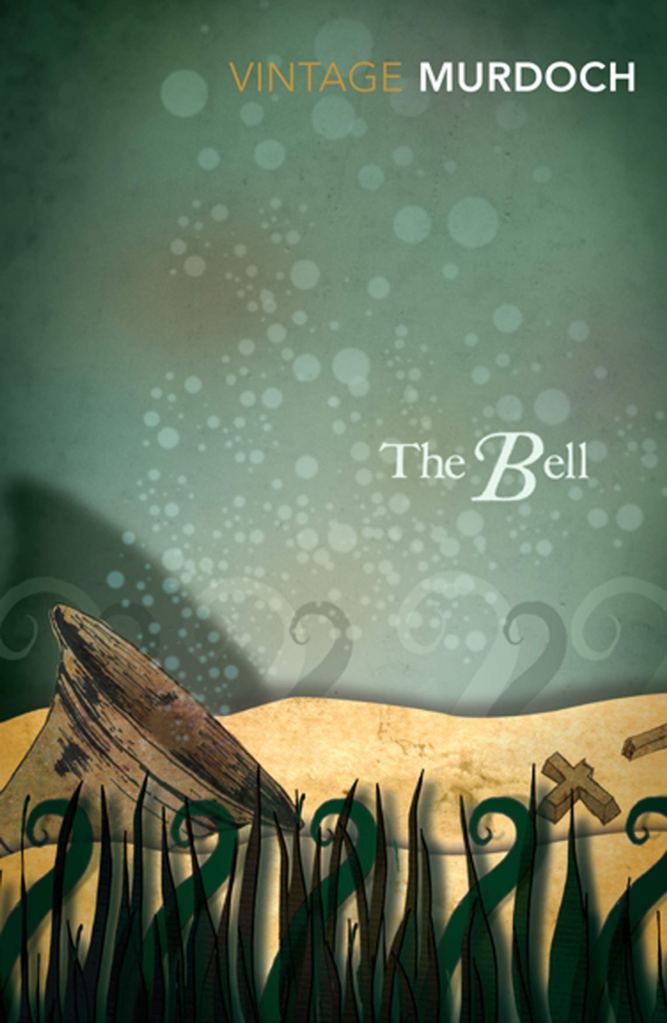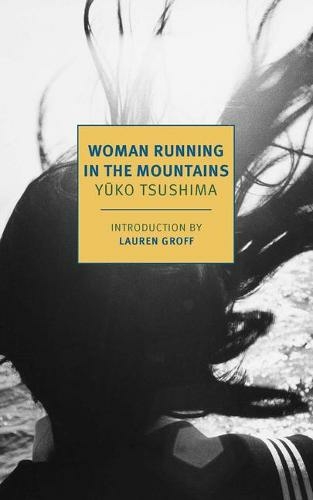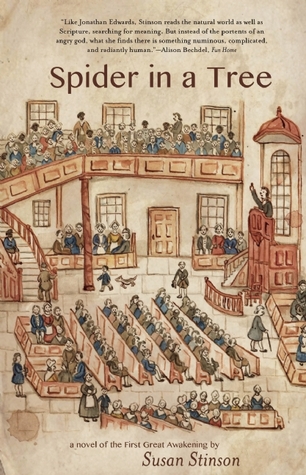




I. The Bell [1958] by Iris Murdoch
It is said that this “funny and sad novel is about religion, the fight between good and evil and the terrible accidents of human frailty.” The Bell should be right up my alley because I love stories that focus on small communities and morality. The synopsis reads: “A lay community of thoroughly mixed-up people is encamped outside Imber Abbey…A new bell, legendary symbol of religion and magic, is rediscovered“. At the same time, it appears that a number of characters also decide to either confront their partners or change their relationships status.
II. The Iliac Crest [2002/17] by Cristina Rivera Garza
Sometimes I am up for something subversive and unusual. The Iliac Crest is by Mexican author Cristina Rivera Garza who decided to explore the concepts of gender and identity, presenting in her story two women who come to an unnamed narrator’s house and start their questioning. “The increasingly frantic protagonist fails to defend his supposed masculinity and eventually finds himself in a sanatorium.” The novel has been called “haunting” and “otherworldly”, and I am sure there are many surprises along the way.
III. The Slum [1890/2000] by Aluísio Azevedo
This is Azevedo’s masterpiece, termed “one of the most widely read and critically acclaimed novels ever written about Brazil“. This is a “vivid and complex tale of passion and greed“, a story that follows a number of characters from different segments of society, exploring the tension that exists between Brazilians and Portuguese immigrants.
IV. The Guest [2001/05] by Hwang Sok-yong
Though Hwang Sok-yong’s novel At Dusk did not agree with me, I hope The Guest will be much better. Hwang Sok-yong is called “the master of contemporary Korean literature“, and his second translated from the Korean novel focuses on the Korean War, a fifty-two day massacre and a battle between Christian and Communist Koreans. The Guest is described as “daring and ambitious…a profound portrait of a divided people haunted by a painful past, and a generation’s search for reconciliation“.
V. Woman Running in the Mountains [1980/91] by Yūko Tsushima
Yūko Tsushima (Territory of Light) was a Japanese author who never shied away from unsettling topics in fiction, often portraying marginalised people dealing with all kinds of societal and psychological pressures. Woman Running in the Mountains is no exception, centering on a singe woman Takiko in her first year of motherhood. Tsushima explores the society’s oppression and ultimate indifference, as well as Takiko’s search for liberation and desire to live her life on her own terms.





VI. Spider in a Tree [2013] by Susan Stinson
This intriguing historical fiction is often found on lists that talk about the most overlooked and underappreciated novels to come out in the 2010s. Inspired by a real man Jonathan Edwards, a famous American theologian who delivered a sermon “Sinners in the Hands of an Angry God”, Spider in a Tree traces his life, examining the power of religion and the iron shackles of slavery in eighteenth century New England.
VII. The Invisibility Cloak [2012/16] by Ge Fei
This Chinese novel is described as a “provocative and seriously funny exercise in the social fantastic“. It follows a divorced man living in present day Beijing and trying to survive by making and repairing sound amplifiers for his rich clientele. He is seemingly going nowhere until “a special job” comes up which maybe “risky”. Ge Fei, one of the best contemporary writers in China, satirises Beijing’s capitalism and social divide.
VIII. The River [1946] by Rumer Godden
I thought Godden’s Black Narcissus was a beautiful, atmospheric novel set in the Himalayan mountains, and just cannot wait to explore the author’s other work. The River is set in India and the synopsis reads: “Harriet is between two worlds. Her sister is no longer a playmate, her brother is still a child. The comforting rhythm of her Indian childhood – the noise of the jute works, the festivals that accompany each season and the eternal ebb and flow of the river – is about to be shattered.”
IX. The Ginger Tree [1977] by Oswald Wynd
In this story told through diary entries and letters, the year is 1903 and a young Scottish woman Mary Mackenzie comes to China to marry a diplomat. However, she soon has an affair with a Japanese nobleman and is castigated by society, leaving for Japan shortly after. Oswald Wynd certainly knew what he was writing about. He was born and educated in Japan, but attended a university in Scotland. During the war, he served as part of Intelligence Corps in Asia, where he also spent more than three years as a prisoner of war.
X. This Way for the Gas, Ladies and Gentlemen [1946] by Tadeusz Borowski
Unlike the rest on this list, this is a collection of short stories. Tadeusz Borowski was a prisoner at the Auschwitz concentration camp and experienced all the worst horrors of Nazism first-hand. In 1945, when the WWII finally ended, he was only 23 and soon after poured all his anguish and disillusionment with humanity into his poetry and short stories. This Way for the Gas, Ladies and Gentlemen contains his unflinching stories of people reduced to non-entities, automatons or beasts while trying to survive the unimaginable.


LOVE Rumer Godden – and I have learned so much from her. My personal favorite is A Candle for St. Jude.
LikeLiked by 1 person
The only title I’ve read from your list is the Borowski, which is good but extremely dark. I’ve read some of the other authors and would be very interested in the Tsushima!
LikeLiked by 2 people
Wonderful books! I loved The Iliac Crest. Hope you enjoy reading them. Will look forward to hearing your thoughts. Happy reading!
LikeLiked by 1 person
really interesting list!
LikeLiked by 1 person
The Iris Murdoch book reminds me that I’d like to read her again now, I last read a few of her books many years ago, and the Susan Stinson sounds quite interesting. I remember studying excerpts from Jonathan Edwards in one of my American history classes…
LikeLiked by 1 person
An impressive list Diana. Very eclectic. From many corners of the earth. I’ll ask my daughter about Cristina Rivera. She’s probably read it since she is very big on Gender issues. (Makes a living of it, she’s a consultant on gender.)
Right now, I won’t add titles, I’ll see what books fall in my hands in Paris. Flying early January. Very excited at the idea of the books I’ll find in the bookboxes along the Seine.
Take care.
LikeLiked by 1 person
Have a great time in Paris exploring Seine book stalls! I will be there in November but only for three days to visit Musée du Quai Branly and Musée de Cluny.
LikeLiked by 1 person
Short but nice. Do remember November in Paris is chilly. (Not sure where you are. If it’s NY, it can be as cold.)
Cluny I love. Quai Branly I have my reservations. Have you already been there?
LikeLiked by 1 person
No, I haven’t. Should I have the same reservations?
LikeLiked by 1 person
I was raised in Africa, west and east, spent my entire childhood there, just after Independence. So I have a personal… “link” with Africa. There used to be a fantastic museum near Vincennes, (Porte Dorée) full of African and Oceania art. Great museology, plenty of light, artefacts well presented…
Now in Quai Branly, Nouvel, who I think is a full-of-himself idiot, decide he had to “recreate” the atmosphere of Africa. Makeshift huts, statues exposed in darkness… They took all the material from the old museum, and hid everything in the shadows… Honestly I hated it. But then that’s me. If you like primitive art, you may not have the same reservations as I have. (personally I would go to Orsay in lieu of Branly any time. Or you could try le Petit Palais which is rather interesting… Or try the experience… From here to November we have plenty of time to discuss the issue. Hell, I might even go against my better judgement and go back this summer and tell you. LOL
LikeLiked by 1 person
Thanks for this invaluable insight! I will definitely take all this into account and may as well choose another museum to go to instead. The reason I decided to go to Branly in the first place because it is advertised as being so specialised, including its South American and Oceanian galleries, and London does not really offer for me that kind of experience – unless you count the British Museum, which is not specialised and which I found wanting in that regard, or Horniman Museum also in London, but which I also hear has a rather limited collection from the continents I am interested in, or one lives in Cambridge where some colleges offer some limited experience of that kind…that is all the UK has to offer, really.
LikeLiked by 1 person
The collection at Branly is quite unique. My issue is about the display. And poor lighitng. But it may have improved… If I have time I’ll give another try and tell you. I will be spending several weeks in Europe… Including London. I will look up the Horniman… Thx.
LikeLiked by 1 person